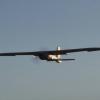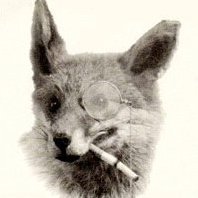Leaderboard
Popular Content
Showing content with the highest reputation on 18/05/19 in all areas
-
Hi to All! Haven't been here for long time, so something a half of year old stuck by me, finally. BRGDS to whole community!18 points
-
Here's my 1/ 72 Gloster Javelin probably an ex-Frog/Novo Soviet kit boxed without a manufacturer's name or model name. The box top simply translates to “For Assembly, model aircraft, 1:72 scale”. The drawing indicated it was a Javelin and hence I threw in a Model Alliance decal sheet and laboured long nights to cope with clunky plastic and flash. Anyway here’s the result. I wanted to do an RAF 64 Sqn machine that visited India in 1963 for Exercise ‘Shiksha’ with IAF Hunters (along with USAF F-100s and RAAF Canberras). I used the reverse masking technique for the wing walk lines. I've posed it with its archrival the 1/72 A Model Yak 28 Firebar.18 points
-
16 points
-
16 points
-
As a bit of a follow on from my recently finished Boeing 720 'Led Zeppelin' model, I decided to keep things non-military again and build something that I have really wanted to do for a very, VERY long time. This goes back to when I was a very young lad, and was memorable for me bacause it was the very first time that I ever flew in an aeroplane, which was quite an event for me at the time of course, and I can still remember how much I enjoyed it. I was very much into aircraft and model building even then, and since then have always toyed with the idea of building the first aircraft I flew in. The occasion was our first family holiday 'overseas' back in the early 70's, which was to Jersey, in the Channel Islands, and we flew out of Norwich Airport (formerly RAF Horsham St Faith) in my home City. The aircraft in question is the DH 114 Heron of 'Channel Airways' and the kit is the jolly old 1/72 Airfix one. The one I shall be building is G-AXFH, pic in the link below. As a bit of a side-note, the picture below states it is taken at Southend (Channel Airways were based out of Southend) but myself and a friend of mine, Mike H, have a slight doubt about that, and the pic may 'possibly' be taken at Norwich Airport instead. We are still looking into that .... https://www.airteamimages.com/de-havilland-heron_G-AXFH_channel-airways_180161_large.html Being of a certain vintage of course, the 1/72 Airfix kit is obviously not state-of-the-art as of today, so things will be changed/modified/scratchbuilt, and some of the things that will need attention are: Exterior airframe surface: All detail will be removed and rescribed. The interior: There isn't one .... . There are two very basic cockpit seats and instrument panel (no control columns) and pretty much nothing in the passenger cabin, so all 14 seats will be cast in resin and added. Transparencies: Cockpit canopy is of the wrong type for the aircraft I am building (it has the bulged section that protrudes above the fuselage) so this will need modifying. Fuselage windows look to be pretty accurate size-wise, but the corners are too 'square' and should be more rounded, and the clear window mouldings have horrible sink-marks/dimples from the moulding process, so these will be changed. Landing light needs adding under the wing. Also the small square windows on the starboard side of the fuselage and port side passenger entry door, aft of the main passenger windows, are slightly too small and too low. They should be the same centre height as the main windows. Wheels/undercarriage: Kit has the retractable type undercarriage which is wrong for the aircraft I need, so will be changed to the fixed non-retractable type. Wheels are horrible and will be changed. Engines/overwing nacelle fairings: Engines look very basic, small intakes on them are very non-descript 'lumps' and the intake at the front, below the prop hub, is too small. The overwing nacelle fairings do not extend back far enough towards the trailing edge of the wing. The inboard ones need to extend back maybe a couple of millimetres, and the outboard ones maybe around 3mm or so. New engines and overwing fairings will be cast in resin. Wing tips: Need to be squared off. Fin/rudder: Again, the one in the kit is wrong for the aircraft I am building. The rudder will be modified into the taller, 'pointier' type, and it and the fin tip will not have the characteristic bulge on them as per the kit one. No doubt there will be other odds and ends that need sorting along the way too .... Have made an initial start on some of the modifications, and the pic below shows the new overwing nacelle fairings, the 14 passenger seats for the cabin and also the new engines, all cast in resin. With the engines, I added a finely finned section just inside the intake mouth to hopefully simulate the appearance of an engine cylinder/barrel, although it is not really visible in the pic. Hopefully should be more apparent with a drop of paint on it. As we are now travelling back in time to the 1970's, any references to Kipper Ties, Flares, Glam Rock, The Double Deckers, Tiswas, Spangles, Corona, Space Hoppers and Raleigh Choppers are not only tolerated they are positively encouraged. 'Jumpers for goalposts ......'15 points
-
Huey captured in the Falkland Conflict by the British from the Argentinian. It was an Argentinian Red Cross Helicopter. Very bad condition paintwork. Not copied the depth of condition . However photos darn it, make it look cleaner than the effects that I applied. Bit of artistic licence. British emulsion over painted, in the Falklands, the Argentinian Livery. I have half painted out the tail & behind the big doors to give the illusion of the change of hands. Kitty Hawk first for me & a very fine kit. http://15 points
-
Hello F-16A Fighter, scale 1:32 by Kangnam. I built the model for over a year. The elements were poorly folded, so I had to bend a little to make the model look something. Flags on both sides, I painted from masks. The antenna, lights and static charge scatterers are not set. Ventilation holes behind the plot and the ones on the opposite side, I cut out the laser in a 0.8mm plaque. Then profiled the plate and pasted into place. The wind deflector was ground and polished. Nice watch.14 points
-
Here's my version of the Eduard 1/48 Hawker Typhoon limited edition. It represents R8893 of No 182 Squadron in about November 1942 when the RAF were still struggling with ocurrences of misidentification leading to aircraft losses due to friendly fire.14 points
-
This time the model quite difficult to paint. The model Su-27 Ukrainian Air Force in camouflage "Digi" set is Trumpeter 1:32 model well-known so it doesn't make sense to describe something about this set again. I can write one thing - we are waiting for a new model of this aircraft. Model made straight from the box, I painted this model with the home made mask so they are not a perfect reflection of the camo Su-27. I hope, however, that this model will please you, I like this camouflage very much ..13 points
-
I had not planned on posting this model here due to its age and lack of detail, but with so many other recent Typhoon threads showing just magnificent models, I decided I would show one that isn't that great. I have no idea just how old this kit is; I know it was issued in the early 1970s at least. So, it won't have the features found on today's great models. But, perhaps we can see how much improvement manufacturers have made since then? At any rate, she is what she is and represents both an earlier era in scale model kits, and my earlier attempts at building them too.🙂 Some of these pics were taken at the Cameron airport, but some were also taken at another small-town airport in neighboring Rockdale, Texas. The airport there once belonged to a local millionaire, H. H. Coffield. He had a bunch of WWII planes out there at one time including a couple B-25s and a few C-47s too. Supposedly he had hired an ex-Luftwaffe flyer to run a, ahem, "crop dusting" operation in South America...oookayy. 😉 There are two hangars and a pilot's lounge there. One of the hangars is very old (supposedly of WWII vintage) and makes a neat background. I met a couple really nice local pilots and had an enjoyable afternoon taking photos of several model planes. It was quite windy at the Rockdale airport though, and the Typhoon almost blew away a few times and the canopy did fly off several times. I put the plane away and came back to Cameron where it was a little less windy for more pics. The model is the old Monogram 1/48 scale Typhoon Mk IB. It was built more than twenty years ago now but had never been photographed before its trip to Rockdale a few years back. I did add some radiators underneath from an old '60s model car. The paint was Model Master and Humbrol enamel sprayed with my Paasche H. I used Parafilm for the first and only time for the masking. Other than that, it's just OOB Monogram from "back in the day". I appreciate your interest and thanks for taking a look at the old girl! 😀13 points
-
Hi all, just from my desk here the new Tamiya Spitfire Mk.I in 1:48. What an amaizing Kit! Add Eduard PE´s and Brassin exhaust.13 points
-
Hi All, Here is the Tristar (now hobby Boss) Flakpanzer 38(t). This is a pretty challenging kit with a full interior, engine and gearbox none of which can be really seen when completed unless you have all the hatches open which spoils the lines somewhat. The 20mm cannon is very intricate and I would challenge anyone to get it 100% right first time round although most people could make a better job of the PE spent shell cage than I've done. Kit tracks are supposed to be workable but just kept snapping so I relented and bought Friuls. Almost all of these were lost in Normandy and made it clear to the Germans that one 20mm cannon was not up to the job of taking down Jabos. Usual C&C welcomed Thanks David11 points
-
I bought another Eduard F6F-5 from @Duncan B a while ago. I didn't bother with any PE this time, so just used an Ultracast seat in the cockpit and tried to do a passable paint job. Due to lack of skill in painting instruments, I did buy @airscale's 1/48 US Navy instrument decals As with the last Eduard F6F I built, I sawed out and thinned down the cowl flaps for what is, in my opinion, a much enhanced appearance for very little effort and no cost. The kit parts have the cowl flaps the full thickness of the cowl piece so even closed they don't look like cowl flaps. It was bought with the intention of making a very ubiquitous ANA623 Glossy Sea Blue US Navy example as seen pretty much everywhere in the Pacific from 1944 to 1945. The trouble is that ANA623 was pretty good paint and therefore most of the stuff modellers do to models such as pre or post shading, panel line washes etc is wholly inappropriate for such an aircraft. Then again, we can't be having a solid, featureless finish because the real aircraft didn't look like that either. I decided to try mimicking the stressed skin appearance of a real aircraft to try to get similar light reflections from a glossy finish. Out with the paint mule! I cut narrow strips of masking tape. The Infini cutting mats made short work of that and got all strips consistent. I gave it two light coats with Halfords grey aerosol primer The tape was removed and I gave it a go over with an Infini 1500grit sanding sponge, the aim being to knock all the corners off and smooth the humps a bit. I then gave it a fairly heavy coat (in many very thin passes) of Colourcoats ACUS34 ANA623 Glossy Sea Blue this morning. This has had a polish with Infini 2500 and 4000 grit sponges and looks like this: Overall, and with more work with the 1500 grit prior to top coat, I feel somewhat positive about it and have decided to go for it. This may take some time! All comments / feedback welcome!10 points
-
Here is my recce-Foxbat. I started the build before Revell and ICM released the corrected nose, so I had to fix it on my own. The rest is OOB except for seatbelts and some extra details in the wheel wells and in the cockpit. I also corrected the angle of the main landing gears a little. The first time i tried Mr. Paint colours. (Maybe I could have started with something smaller...). Great to work with, except for the horrible smell! I really enjoyed the build, this is a great kit of an iconic aircraft, one of my all-time favourite subjects! Thanks for watching!10 points
-
As usual from me this is one of my builds from a Group Build, this time the Specialist’s GB. I’ll start off by saying this is a model to build only if you REALLY have to have a 1/48thViggen in your collection. It looks fantastic in the box but it’s a down hill disappointment as you build her, she’s not a straightforward build and in a lot of areas a real disappointment. Enough on that. Heaps of AM stuff was thrown at this build and as I found 90% of it is actually for the Airfix/Esci model even if they mention this and the Special Hobby model. There are noticeable differences between these model so parts don’t quite fit. The scheme…well it prematurely aged me by 20 years I reckon! I used masks and found out the hard way they’re really designed for the said Airfix/Esci Models! That aside the thing that saved this paint job was the paint I used. People that have followed some of my build know how much I rave on about this Acrylic Lacquer paint from Mr Paint. It goes on so thin and nicely and just gives an amazing finish, just what you need for difficult and complex paint jobs. Anyway please enjoy Model: Tarangus 1/48thSaab SH/SF-37 Viggen Paint: Mr Paint, plus details with Tamiya & Gunze Acrylics, Model Master Metalizer Lacquer Extras: CMK - Air brakes set - Ejection seat - Thrust Reversers Maestro Models Conversions - Canards with lowered flaps - Cockpit Detail set - Corrected Wing Pylon - Rb04E attack missile - SKA24 Long Range Camera - Splinter camo masks Master Model - Pitot & AOA probes Phase Hanger Resin - Viggen Wheel set9 points
-
Ah, yes another Tempest 🙂 Picked this up at Telford, started it almost as I was driving home (well stuck in traffic) but didn't finish it till recently. Finally got the camera out and took a few shots. Only thing I did was to modify the spinner to close up the gaps based on the build the General did elsewhere on this site, otherwise as it came in the box. Lovely kit. Roll on the Mk II. Tim9 points
-
Evening all, Time for a BUFF update.... With the school term being in full swing time at the bench has been a little limited, but the wings are now on the model is really starting to take shape. The spars I'd spent hours making previously meant the winds simply slid over them and resulted in a very solid union with the fuselage. The fit wasn't too bad, but in true vacform style the wing roots on the fuselage were shorter in length than the wings themselves, so there was a lot of building up and shaping with Milliput to level things out: IMG_1036 by Thomas Probert, on Flickr Once under a quick lick of paint, the joins look pretty good and capture the shape of the real aircraft quite nicely: IMG_1053 by Thomas Probert, on Flickr IMG_1051 by Thomas Probert, on Flickr We've now got something starting to resemble Boeing's finest: IMG_1047 by Thomas Probert, on Flickr IMG_1049 by Thomas Probert, on Flickr As a size-reality check... that's a 1/24th Harrier entering the home straight: IMG_1055 by Thomas Probert, on Flickr Until next time, Tom9 points
-
Gloster Meteor FR.9, WX978, 2 (AC) Sqn, RAF, Gütersloh, May 1953. 1/48 Airfix kit (A09188), assembled SFTB, paints by Colourcoats and Humbrol. Onwards and Upwards!9 points
-
Hello Dears ! Just a few teasing words, I finished her yesterday but SWMBO was working on the PC Then this Morning, I had to go to work, but I can't wait to share a bit with you !! There's been a load of work on the beast !! And as usual, I'm not glad about my painting I know that the real things are generally not finished as neatly as a Michaelangelo masterpiece but …. So, we are back in Korea, back in late '50 Aaaand Back aboard HMS Triumph (Once again ?? ) Paints are a mix of Mr Color and Xtracrylics, stripes are Lifecolors though! Ojk Gents, back at the PC around 15hr for the follow up !! Must earn some pounds or Euro whatever !! See you soon ! CC8 points
-
I finished this a couple months back but didn't really have the chance to post it. This is their Profipack boxing from 2007, painted with a combination of Tamiya and Gunze acrylics in the colors of Karl Spenst's Fw 190 of 8.JG300. A lot of reviews of this kit talk about it being difficult to fit together and unforgiving to construction mistakes, and it certainly shows - This build took me around 4 months to complete, most of it being construction with me nearly abandoning it. It's not impossible, though, and the end result is rewarding with lots of attention to detail. The Profipack boxing also comes with a masking set and photoetch, all in all which make the build a completely different animal from your usual Tamiya 1/48 kit. It's certainly doable and a good contender for a detailed Fw 190, although I heard Eduard's doing a new-tool version that might be better. Anyways, here are the photos: Feedback and criticism is appreciated, thanks for looking!8 points
-
Slowly adding to my Lightning collection. This is Airfix's 2a with a few additions I've picked up over the years. CMK engine and electronics bay; Barracuda cockpit, wheels and exhausts; Master probe; Xtradecals markings. Think that's everything 🙂 . Having said that the refuling probe may have come from a Sword kit. Tim8 points
-
Thanks Benedikt. That was one frightening image! Fourth from the left, pursed of lip. You know damn well what he's thinking.... Glad you approve Maestro. If I can only colour it in to half the standard you do I'll be happy Giorgio. Doesn't it just Roger? 😃 And shows me how much fluff and dust there is around in my supposedly cleaned-up-for painting-bench. 😬 (Reckon I need one of them NASA clean rooms they use for prepping space probes...) Its what brings us together Anthony. 🤣 Nonsense dear fellow. I stand on the shoulders of giants &etc. etc. That's the rumour... Ta. 😁 Nowt else needed Ian. Your interest is enough. Must have got mildewed Rob. It turned green overnight! 🤘 Me too a bit Chris, despite my earlier trepidation at painting any of it... -don't talk back! Oh wait. That was a different song.... 😸 Quick visual check at dawn revealed that there was indeed a bit of remedial work needed on the interior aspect of the wing roots due to the amount that would be visible through the greenhouse windows: That lip 'twixt the scrap card I walled them in with and the fuselage was dealt with by some Humbrol filler in the places it would be noticable: Of all the fillers I've tried I love the ease and finish of this Humbrol stuff for such jobs and find it easily planes flat with a scalpel blade held between thumb and forefinger; you can feel even very slight imperfections in the finished surface. Whilst that was drying I shot some metallics. Alclad steel for the exhaust ring and oil coolers: I'll be coming back to those exhaust rings in a future installment to tone and discolour.... Aluminium for the engine blocks: The cylinder heads and carburettor/fuel pump assemblies will be returned to black via brush painting later, then some weathering and the oil pipe and wiring looms to add. BTW, if you think the left hand one of thatpair of engines looks a bit truncated compared to its companion, your right, and it's on account of that being the the starboard one that needed the cylinder heads amputating to fit inside the nacelle. Only the front of that engine needs detailing as well, hence is deliberately unfinished around the sides. This has doubtless been noted countless times before: Tamiya doubling-up on their lid colours? I can't tell the difference. Plan is to XF-71 the necessary parts and come back later in several passes to shade and highlight. En passant... Not going to pointlessly recapitulate any discussion of colour fidelity here but I did discover the following post by the estimable @Nick Millman from a few years back that seems spot-onin erudition regarding the additional sociological and historical factors that lie behind our adoption of colours for particular tasks: A valuable lesson in unthinkingly projecting our present modes back upon the past. Thanks Nick. The Greening: As with the engines, much to do adding black back to the IP, seat cushions and straps &etc. as well as shade/highlight. I love what Giorgio does with tempera at such stages but haven't been able to find a reasonably priced set so far, so will stick with oils for now, that leave me with no complaint tbh. From (non-restoration!) photographs I can't tell should that firewall be bare metal or shiny grey, it looks both in various photos.. That wing-root 'lip' I started off with has disappearred nicely under the old verdigris now: Again, more black to add for electrical panels and bomb-aimer's switch and so on and so4th. If I may I'm going to end with a colour question that the combined expertise on here may be able to help me with? Digging around in various publications (Warpaint, Ray Sturtivant's The Anson File, back copy of SAM) there are a number of options for the colour of the undersides of Mk.1s of this period. The callout in the original kit instructions is for Light Grey, as was indeed the case on many aircraft, but equally for the same period there are Mk.1s listed with both silver undersides and also black. As a Special Duty aircraft factory-fresh and seconded from Boscombe to Wyton for these beam missions I'm all of a quandary as to what choice to make (in the absence of definitive directions for this aircraft). Michael Cumming's excellent Beam Bombers: The Secret War of 109 Squadron (thanks @corsaircorp for the brilliant reference to this!) makes no mention of any deviation from the standard paint scheme (not that you would necessarily expect this level of detail in a history book) and of course, in the light of Nick Milman's observations that any semi-offical changes may have gone unrecorded in the historical record anyway in this highly fraught period of the war (June 1940) when events were moving incredibly fast all at once.... Two of the drawings at the back of Ray Sturtivant's book for Mk.1s of this period show a Night underside, so in the absence of any contradictory information regarding N9945 I'm going to go with that. Think that's a safe enough distinction? The one big problem staring me in the face is the an absence of documentation as to what the squadron codes down the side of the fuselage might have been for this aircraft, but again I think Mr Sturtivant may have helped: I am grossly ignorant in such matters guys - does the 'HS' here indicate that these would have been the two letters painted after the roundel on the side of the fueslage? Thanks for persisting with today;s witterings.... Tony8 points
-
Hello everyone, I started to do the model at the beginning of 2016. Due to my personal reasons I gave it up for many months. I realize that this is workshop department and what I’m going to do is a monoloque, but I didn’t know where to present it. I spent a lot of time over a model and I think I’m only halfway there. Maybe someone will interest what I have done so far as I haven’t found any rewarding information in web about construction report of this model. If I return to work on this model I’ll post pictures from time to time. I have tried to choose the most interesting so far and there are still quite a lot of them. There are two sets of “Anigrand” available on the market: a resin and a copy of the resin "wacu" Combat Models with exactly the same errors I suppose “Anigrand” was used as a form. The most important modifications are: Too bulky and bad shapes front Badly plased and with bad shapes windows Badly placed wings, all to much forward Bad AOA wings, bad shapes and dimentions Correction of the hull cross section Correction of the wings Bad shapes of pylons and engines Bed arrangement of shin hassis Bed shape of vertical balancer No cockpit No hold The model has full lighting (with separation of light colours) It also requires dimensioning and embedding in correct places but the appearance resembles C-17. I had to make some assumptions about the plans because in practice there are no plans, and even there are, they have mistakes. Even Boeing made some sketches which are incorrect. Scaled planes that I used for dimensioning I have found in Model Book form 1999, all the rest are pictures. The model C-17 no 006 from 315 AW that I’m doing everyday is stationed in Charleston (South Carolina)7 points
-
Hi all, This is my recently completed Trumpeter 1/72 F-105D. The camouflage scheme was painted with Vallejo's Model Air Vietnam War paints. Decals are from the kit. Weathered with a diluted Model Master umber paint wash. Final coat is Tamiya semi-gloss.7 points
-
Hello everyone here is my Burst B Revell color (if we can say :)) 1/4 Gascogne. Model quite simple to mount without trap, except to chew some fittings nothing very nasty .. But for a bit full all I installed LEDs for position lights including a flashing on the back and the reactors .. Decals Syhart, pod reco Arsenal .. Hope you like it .. <a href='https://www.casimages.com/i/190514065135576422.jpg.html'target='_blank' title='Mon image'> <img src = 'https: //nsa40.casimages.com/ img / 2019/05/14 / 190514065135576422.jpg 'border =' 0 'alt =' Mon image '/> </a>7 points
-
After a run of difficult models, I fancied doing something simple for a change, at least that was the plan! So here is Airfix's 1974 model of the Spitfire Vb, which has been released and re-boxed several times. It is a reasonably accurate kit, although much simpler than today's CAD generated models. EN821, 243 Sqdn, Ouston, July 1942 (2) w by Philip Pain, on Flickr EN821, 243 Sqdn, Ouston, July 1942 (5) w by Philip Pain, on Flickr EN821, 243 Sqdn, Ouston, July 1942 (12) w by Philip Pain, on Flickr EN821, 243 Sqdn, Ouston, July 1942 (14) w by Philip Pain, on Flickr EN821, 243 Sqdn, Ouston, July 1942 (16) w by Philip Pain, on Flickr I had to find a replacement for the canopy, as mine had bad air bubbles. Also fitted a larger oil cooler (from a more modern Airfix kit), and scratch built two heating pipes coming out of the rear of the exhausts. The marking became a big challenge, as the real machine had obviously started life with 1941 style roundels (and their brighter colours), before being partly repainted into the mid-1942 scheme. Also the code letters were a funny size, which I couldn't quite find a match for. The letter 'M' is always difficult, as no matter how many M's you have on decal sheets, they never include the one you want, so I made mine using letter 'V's. It is a Spitfire Mk.Vb serial EN821 of 243 Squadron at RAF Ouston, Northumberland in July 1942. It was being flown by their commander Squadron Leader Allan E.Johnston when the "Aeroplane Magazine" took a series of photos, which have since been widely published. Does this one look familiar to you? 243 Sqn Ouston 1942 original by Philip Pain, on Flickr You will recognise it as the following art print that has become the most common Spitfire painting to adorn living room walls; Vickers Supermarine Spitfire Mark VB of 243 Squadron by Philip Pain, on Flickr And then the story of EN821 gets even more interesting. Later on in 1942 it moved on to 65 Squadron, before being returned to manufacturers throughout 1943, for various updates and mods. In February 1944 it was transferred to the Fleet Air Arm, but apparently it was not 'navalised' or hooked, just being intended for shore based training. It was issued to 808 Squadron at RNAS Lee-on-Solent, and then on D-Day 6th June 1944 it was shot down by an enemy aircraft over Le Havre while spotting and gun-laying for Royal Navy warships. Sadly Sub Lieutenant Cogill was seen struggling to bail out, but he was killed. Most versions of D-Day say that the Luftwaffe was nowhere to be seen, but 129 allied aircraft were lost during the invasion. It must have been a rare event for an aircraft to fall to a Luftwaffe fighter. It is not known if EN821 wore navy camouflage, but it would undoubtedly have had full D-Day stripes.6 points
-
If you've never heard of Xinshi Hobby before, then you're not alone. I first saw the kit in the listings of a Chinese seller on ebay while ordering the RR armoured car (which came from the same seller). On first sight, I thought the kit was a dodgy knock-off of the Meng toon Tiger, but looking at the photos more closely, it was clearly an original kit. I figured 'what do I have to lose' (10 quid actually, but I was prepared to risk that), and ordered the kit along with the Royce. When you see the box art, you'll understand why I was a little dubious at first It turned out the kit was actually rather good (as far as it goes - it is a cartoon tank at the end of the day). I built it up in the background while doing the Royce, and added a few extra details along the way. If you pick one of these kits up, don't be shocked when you lift the lid, as the kit is moulded in pink, purple and yellow plastic. The parts are actually very well detailed though, especially the tracks, which are pre-assembled indi-links, although they could do with being a couple of links longer. The Zim was done with Meng resin decals for speed, and the only other significant additions were the scratch built shell and side skirts, and a bit of metal mesh for the engine screens. Thanks for looking Andy6 points
-
6 points
-
I like to think this build grew me in the most important way—building e-friendships with fellow modelers who have helped me greatly improve—but most importantly I love following their current builds—it is what our hobby is all about. Special thanks goes to @giemme, @Gene K, @billn53, @f111guru, and @RidgeRunner for their awesome support and contributions. 🙂 I hope the pictures of the finished model provide some satisfaction in how much you can build on potential for growth! The final portion was simply bending the intake air speed probes out of copper wire and painting the Alclad 2 Airframe Aluminum. Ok, on to my observations for Monogram’s F-4C/D kit. In my humble opinion, it is the one to beat in 1/72—its major let downs are incomplete intake trunking (shared with Hasegawa F-4s and solved with @Gene K intake technique), a canopy that requires some work to fit properly—my one piece canopy also cracked, and I have to say the kit's clear plastic is extremely brittle—this model uses a canopy from another Monogram F-4. I purchased a Rob Taurus canopy set designed for Hasegawa's kit for my next Monogram F-4 build--I plan on building it w/ the canopy closed so I think the Hasegawa lines can work towards a clean fit. The vari ramps are also need work OOB to be accurate & they are weakest part of my build since I did not improve them—on my next build, I will likely junk them in favor of a Hasegawa. It would be great if Academy scaled down their 1/48 F-4C/D, but until I believe the advantages of Mongram’s effort nudge out Hasegawa’s (barely) Some will argue the raised panel lines are a major detractor and give a big advantage to Hasegawa—to my the eyes the finesse of Monogram’s work does not let the overall project down. I probably did not do the Monogram Mafia justice with my sophomoric stretched sprue work—but hey, I am getting better and do not run away from raised panel lines like I once did. If building a Vietnam war Phantom, one must also check their resources as Monogram clearly used a post Vietnam F-4 to base their 1/48 and 1/72 kits given the reinforcing plate on the stabiliator. On my particular version, I sanded this off and leveraged foil and stretched sprue to rebuild the detail after looking at a lot of pictures and video clips of F-4s in Vietnam. In my opinion, strengths of Monogram's kit abound—the cockpit rivals aftermarket sets required to bring Trumpeter’s F-105s up to date—not too bad for a kit over 30 years old! One could argue that not providing cockpit boxes for the LORAN antenna is a major oversight given the amount of effort Monogram put into this project—I would agree, but for those interested, Detail and Scale’s F-4C/D volumes covers these upgrades well. I was also impressed with the ECM stores—I cant argue with those who say the quality of the weapons stores is about average, but to me they look the part. Monogram is to be commended for including the gun pod on the kit--@giemme used it as a basis for opening up his gun pod, and it looks accurate to my eyes out of the box. I do wish Monogram had scaled down their 1/48 camera to 1/72. Special thanks to @f111guru for sharing his period weapons loading pictures which played an important role in arming this Phantom. I believe Monogram’s wheel wells, drooped flaps, wing fule dumps and air breaks are strengths over their Hasegawa cousins. Some might argue that Monogram should have done the air break struts as a separate parts—I would agree, and am considering drilling this part out and working a replacement strut as @giemme did in a future build. The natural metal tail section is impressive and looks awesome with foil and Aclad II—I believe Alcald 2 would have been fine overall, but I still like a foil base. The landing gear are impressive and with help from @giemme build, @Gene K and Scott Wilson’s rundown in ARC the main wheels ironically became my favorite and most satisfying part of this project—no resin, just friendship, air brushing and research! As far as after market additions and techniques go, here is my run down. The Airwaves photo etch worked fine for me in this build—perhaps my expectations were low going into the build, but I believe they look the part—I do acknowledge that without @giemme and @Gene K pulling me out of the fire, the modifcations required for a Vietnam bird might not have happened. The Aires Hasegawa burner cans fit without issue and are a major strength of my build—kit cans just cant compete. Painting—ok, I am going to catch flak—but I still liked the Top Notch vinal masks to start my camo scheme. Please note I said start—I found it very doable to modify the scheme based on historical pictures. Now the biggest slam on me—this will be my last spray can camo scheme—the layer of paint out of the can is simply too thick for this scale. The tons of valuable feedback I receved me have convinced me te airbrush is the way to go 🙂 While the washes reduced contrasts and scaled the camo, I believe it would have turned out better with an airbrush. I might still do the very light underside greys in a spray can, but I am now a full airbrush convert. I was especially impressed with how I got a nice dull with simple Testors lacquer flat with an airbrush vice the frosting @billn53 & I experienced on our Thuds. This Phantom benefitted immensely from it. I was very happy with Print Scales decals—the fonts seemed spot on and I appreciate they pursued some unordinary subjects. Based on my research over the last 6 months, the only things they missed on '601 were the final kill mark was a half vice a full star & there was no "601" on the front strut door. One other shortcoming was the red and white stripe did not extend the near full length of the canopy as photos indicate it did—Tamiya Red and white easily solved this problem. My only issue with Print Scale is that they insist on not sharing the resources of their research on the markings. This would be very helpful in accurizing the paint schemes for their markings. @RidgeRunner and I discussed this in my last build. For what its worth Martin, I included the The Honey Pot II with its kill marking based on the picture you provided following my build—thus proving its never too late 😉 Got to say I think it looks awesome with 601—thank you for your help! I was also overall happy with Microscale’s F-4 stencils, although I think they could have supplied the prominent stencils on the landing gear and air breaks. I believe a fair criticism of my observarions would be that I have not built the Hasegawa kit. I think my bias is based primarily on the fact that, 1) raised panel lines are not a detractor for me & 2) the cockpit, wheels, wheel wells, air break and flaps did not require the elevating work @giemme needed to initiate on his build. I believe, where my build fell short is more a critique of my skills and not of the kit’s. TO be clear, I am a fan of Hasegawa and have 2x F-4Cs in the stash—one could call me out here—I am saving them for a light gray scheme as I believe the engraved panel lines will work more in my favor vice the forgiving nature of the Vietnam scheme with stretched sprue repairs. Revell Germany or Revell (whoever owns the molds), if reading, please consider re-releasing this classic F-4C/D—you did the F-4J—why not the F-4C/D—you’d give the competition a run for their money! (I had heard Accurate Miniatures was loaned the molds) Better yet, maybe I is time for an updated F-4C/D in 1/72 given the impact of this work horse in the Vietnam War. Academy—please consider making a C/D version of your F-4 family with full intake trunking! I am toying with a couple next Phantom Ideas—converting and Academy F-4J into a D (use unslotted stabilaotrs/engrave a air- air refueling receptacle while eliminating probe door/update cockpit--is that all I need to do?)--I am also thinking of pulling an @giemme and integrating a Monogram F-4C/D wing onto an old Hasegawa F-4E for a more accurate Vietnam long nose, or diving head first into Airfix’s Fg.1 (been tracking @Gene K's comments closely). Then I go back to wanting to build “The Saint” now that I have a refrence! All that said, I know this for sure, my next Phantom will be better than this because all of you have made the time to help me! I am about to pick up the family and move based on our recent promotion, so I will be a lurker until we unpack out of carboard—but I guarantee you will all inspire me to build—I think the starter project for our next place will be a Paul Boulton Defiant—it is Britmodler after all and I need to pay homage to those who linked us together! That said, I might just take a crack at the Airfix FG1 kit with my Big Ed Set since I might be going through Phantom Phreak with drawl—lurking on @Gene K's blogs convinced me the Big Ed would be a wise investment 🙂 Thank you all again for your inputs and help in making this project a satisfying build that I love to look at on my shelf. It has been an awesome build--and I am sure you will be happy to hear that my wife and kids are still staying with me after all this 😉 Hope all is well & build on! Erwin6 points
-
Here's mine, an Argentine Navy Dassault Breguet Super Etendard which I never knew meant 'battle flag' in French. The full build thread is here but to recap: Kit: Airfix A03060 (ex-Heller) Super Etendard Build: OOB with seatbelts from Tamiya Tape and ejection seat rings from wire Paints: Halfords plastic primer (can), Revell Acrylics (brushes); Future, Flory Models wash; W&N Satin Varnish; Pastel chalk; Oil weathering (badly!) Decals: From the kit with extra stencils from spares. Markings for #203 of Lt. Mayora, No. 2 Naval Fighter/Strike Squadron, 1982. Airfix_Heller_Super Etendard_1_72_Done (14) by Dermot Moriarty, on Flickr Airfix_Heller_Super Etendard_1_72_Done (7) by Dermot Moriarty, on Flickr Airfix_Heller_Super Etendard_1_72_Done (4) by Dermot Moriarty, on Flickr Airfix_Heller_Super Etendard_1_72_Done (10) by Dermot Moriarty, on Flickr Airfix_Heller_Super Etendard_1_72_Done (1) by Dermot Moriarty, on Flickr Thank you for all your comments and to @trickyrich and @Col. for hosting and @Enzo Matrix for his work. Enjoy your modelling. Cheers, Dermot6 points
-
Ta Rob. You're quite right of course that sometimes 🖌️feels like a step too far! Thanks Guru! 😄 I would love to see that printed on the bottle label as a customer testimonial! I went outside the lines years ago hendie.... It's gonna be a conceptual think-piece. Just a black square and everyone too afraid to admit they can't see anything in it. Paging Mr. @Pete in Lincs Mr. @Pete in Lincs to Reception. Job for you. 😈 Ain't it just Johnny! Moebius scared the blinking stuffing out of me back in the day. Oooeerrrr...it's happening all over again. 😱 No more messing then. Optimus Primer day today. One job tidied away last night was to redo the exhaust ring for the starbooard engine. Having done a much better job on the port one where it emerges from the engine (and requires that cutpout in the nacelle underside) I simply had to go back and make a better first of its starboard counterpart: This necessitated adding a new and more accurately-shaped end part where the first part of the exhaust emerges from the engine and then snakes round into the main circle: I also had to remove and resolder 3 or 4 of the other outlets as a result of this operation but the end result was I feel a more satisfactory effort. Getting all the parts laid out in the spray booth earleir it finally hit me what I've been doing here for nearly a whole year. Basically I've made a model kit. The side windows were also masked both sides in preparation for paint too: Enough natter or @giemme will be giving off to me again. Now with added black: I've always had problkems keeping tiny bits from blowing away so no messing about here, double-sided sticky tape to keep it all in place: The Alclad Black Primer just seems to sit so beautifully onto forms, no matter what material they're made from: Also merciless of course at showing up every stray hair and fleck of dust on surfaces that still need further attention: Overall though there's not too much to do on most of these parts bar a rub down and polish up: The bigger bits: I know the lower part of the rear cockpit still looks messy around the wing root but I want to wait and put the fuselage together with the framework in place to see how much of it is visible and/or needs some filling: The framework itself comes up rather nicely under black, with only a few bits needing sight of a file and some W&D along the edges in places: A better view of the front cockpit: -and the AG's eyrie: So. The state of play at the moment with anything remotely connected to the interior under primer now: I'll come back to that with fresh eyes tomorrow and make a note of what needs tidying up. Thanks for looking! Tony6 points
-
I have had this cyber-hobby kit in the stash for a few years so I have dusted it off and I will throw it into this GB. The plastic has just been re-issued as a 2 in 1 kit by Dragon, I have always fancied building this scheme with the charging Knight on the turret, so it's as it comes with just a new Armour Scale barrel. Here's the obligatory box full of bits picture: Wish me luck, it's covered in Dragon zimmerit!5 points
-
Hello everyone! Here is the Airfix 1:72 McDonnell F2H-2P Banshee BuNo 126678 “2” of VMJ-1, USMC in Korea, 1951, which I built back in 2000. I opened up the solid-moulded camera ports in the nose, scratchbuilt some cameras and glazed the openings with Kristal Klear. The kit was fully painted with brush. Thanks for looking. Miguel5 points
-
Well, I've surprised myself with the Friuls today. I was up about 6.30am and got started using my 'my method' method which I developed when I made the winterketten for my Nashorn. Familiar with the method now, and being able to foresee and prevent possible problems later, (well, most of them any way) I was speeding along, this despite the tracks needing more cleaning than did the Nashorn's. I forget how many hours it took me to assemble the Nashorn's tracks, but it must have been 10 hrs or more. Today, I assembled my Tiger's tracks in a total of around 4hrs start to finish. And now they've been painted and weathered as well. I've only made one Tiger I before, but I found it extremely easy and quick. That's why I decided to go for the 'Engine hatches open and a scratch-built engine'. I felt I needed a challenge and wanted to make something MORE than OOB. That part of the build will be long, I suspect. And so will my paint scheme. So it's been great to get the tracks out of the way so early! Good luck to all taking part, and if you want my 'my method' method explaining there's a section in my WIP 'Crouching Tiger, Hidden Tamiya', but feel free to ask anyway. Rearguards, Badder5 points
-
Visible in the bottom set of tracks are the slightly 'askew' track pin er... thingies.... those bits of the links where the pins are first inserted - kinda cylinders with hole in. Someone will tell me what they are called, I hope! Anyway, they are nearly all slightly bent out of line - due to old/bad tooling - and some made it difficult to get the pins in at first. A bit of bending and 'wire twisting' got around this most times. In a few cases I had to choose a different link. Again, these are the innermost sides of the tracks and most will be hidden under the Tiger. Now for some paint! I'm going for a grey acrylic primer first (decanted from an aerosol can and fed into my H&S Evolution CR plus AB. If you've got one, flaunt it!) Hopefully, this will lessen the amount of bare metal exposure which sometimes occurs with handling the finished tracks during fitting. I'll be colouring the tracks with a homemade mix of Burnt Umber, Red, Blue and Sap Green acrylic inks before applying ink washes of Black and Sepia. Then I'll be applying a wash of Tamiya acrylic Buff, and a dry-brushing with Gun Metal flavoured Weathering Master. That's as far as I'll be going for the foreseeable future, but the tracks will be getting mud and probably snow as well in future. TFL Badder5 points
-
Like I said i have been busy carly floats painted and stanchions made up and painted also added the exhaust covers and rods at the rear. also made up the boat hooks going from the photo of the real boat in the instruction manual the hooks go on to the breakwater and not the deck as some have them had to move the cleats outboard to get the rod pivots to fit think the instruction is a generic for most types again should have checked first beefy5 points
-
POST UNDER CONSTRUCTION AGAIN! ABRIDGED VERSION......JUST BECAUSE! OKAY? MY METHOD FOR ASSEMBLING 'FRIULS' The first consideration: Are the links well made and 'clean'? Now, with luck, the track links will be in good nick, with no flash, gate-marks, or distortion. In this case assembly can begin, with each link needing to be handled only once, and no fiddly snipping, storing, picking up and inserting track pins. GO TO 'STRAIGHT FORWARD ASSEMBLY' Probably though, there will be some gate-marks at the very least. So these will need to be cleaned off to allow the correct mating of adjoining links. Worse still, there might be some flash. This is not just unsightly, but it may also prevent good mating. Again, this will need to be cleaned off. Whatever, assembly can begin. WHAT? I hear you ask? What about cleaning the links up first? What about blocked holes in the 'hinges'? If they are blocked they will need to be drilled out, won't they? Well, yes to all of that, but not as per the videos you see. So let's take that worst-case scenario - a lot of gate-marks, bad flash, distortion and blocked hinges. The tools required for assembly: Emery board, file, or sandpaper etc. Flat-nosed pliers. Side-cutters/heavy-duty scissors or some other 'snips'. Pin-Vise with 0.8mm Drill Bit. For simplicity, let's assume we're all Right Handed... First, pick up your coil of 'pin wire' and place the middle, ring and an optional little finger of the left hand through it, then clamp it to the palm. Leave the 'loose' end of the wire pointing upwards and in the vicinity of your thumb and forefinger. Then pick up a 'dirty' track link like so: With the right hand, pick up a file/emery board and sand off the gate-marks along the BOTTOM edge and any bad flash elsewhere. If the track link is bent, or the pin guides are misaligned, straighten them out now. Now, with the right hand, grab the wire and insert it into the link's pinholes. Hopefully the wire will go all the way through. Even if this is not the case and the wire only goes part way through, you can now, 'store' the link on the wire, letting it drop down towards the hand. Then pick up the second link and clean this up, remembering that you need only clean up the gate-marks along the TOP edge at this point. You will now have two 'clean' links. Using the Right Hand, remove the link on the wire and offer it up to the link between finger and thumb, with the 'first' link on top of the second, like so: Check that the two links fit together nicely. Straighten out any bends at this point. Next, grasp the end of the wire with flat nosed pliers and gently push the wire into the hinge. I'm afraid I only have two hands so taking a photo while holding a track link a pair of pliers and a camera is impossible. You'll just have to imagine that the wire is clamped in the pliers. Best to clamp the wire lengthways in the pliers, as shown: It is important to keep the length of wire protruding from the pliers SHORT. 3-4mm is about right. Any longer and you risk the wire bending and collapsing when it comes up against any blockage within the hinge. So, begin to push the wire in, at that 3-4mm rate. In this 'worst case' scenario, we'll imagine that the holes for the pin are blocked. In extremis, you could now drill them out using the Pin Vise and 0.8mm Drill Bit, but I don't usually bother. Instead, I twist the wire repeatedly clockwise and anti-clockwise and use the wire itself as a drill bit. I've not as yet failed in 'drilling through a blockage' this way. Continue with these processes until the wire reaches the far end of the hinge and the blocked end that is intentionally there. IF you are unsure as to whether the wire has gone all the way, you can either retract it fully and lay it across the link to compare lengths and re-insert it, or you can continue to 'twist' and drill right through the track link. The latter is probably not the best solution, but it's not a disaster. Simply retract the wire back in a bit and apply a blob of medium CA to the hole. The other way to check is to try and pull the 'questionable' end of the links apart. A 'short' pin will allow a gap to open up between the links at that far end. I'll show photos of that later..... Once the wire is all the way in though, you will have two joined links and you can now snip the wire off. I usually leave 1mm or so of pin sticking out, just in case I have to remove it. These '1mm sticky-out bits are not usually visible, being on the inner side of the tracks, under the vehicle. However, they would be visible fore and aft at the sprockets and ilders, so I make sure to snip those pins off flush. Again, I only have two hands, so you'll have to imagine..... With the pair of links joined, it's time to sand/file off the gate-marks along the BOTTOM of the bottommost link and 'store' the pair on the wire. Now the next link can be picked up and cleaned - the gate-marks along the TOP edge being the main focus. The previous procedures are then repeated and again repeated until I have a set of five links. And that's the final consideration: To stave off boredom I tend to assemble 5 links at a time until I have enough sets to make up a full length of track (or thereabouts) I then join pairs of 5 together to make sets of 10, and sets of 10 together to make 20's and so on. This not only staves off boredom, but it is far easier to join two long equal lengths of track together than it is to keep adding one link to an increasingly long length. PROBLEMS AFTER ASSEMBLY: Here's a photo of two joined sets of 10, which I made earlier today, As you can see I placed the length against a straight edge to check the tracks for straightness. There was a bit of a bend in them along their length due to the bad tooling of the moulds and distortion of the links themselves. To straighten the bend I pulled fairly hard on the ends of the track length. AND whilst doing that it became apparent that one of the track pins hadn't gone 'all the way'. A wider gap can be seen between the 4th and 5th links from the right (the blurry bottom of the photo) As usual, I'd left a tiny bit of wire sticking out of the top edge and I was able to grasp the pin with the flat-nosed pliers, pull it out and replace it with a new pin. Also, note the wires sticking out of the bottom edge of the links far right; these were where I accidentally 'drilled' the wire right through the hinge. I was able to push these back in and snip off the opposite end that then protruded. With these problems sorted it was time to fix the pins with medium CA. STRAIGHT FORWARD ASSEMBLY. Before purchasing my first ever AM tracks, for my Nashorn, I checked out a few vids to see if Friuls were worth the money and the time and effort. I quickly decided that they were worth the money and the effort for their 'realism', but was a bit concerned about the 'TIME'. In quite a few vids guys were shoving the pin wire into one link, marking the point of full insertion, withdrawing it, measuring its length then carefully cutting 180 or more pins from the coil of wire - dropping many during the process, and having difficulty picking them all up and storing them safely in a pot - then having just as much difficulty in picking them up again and handling them during track assembly. This struck me as an utter waste of time: over-complicated and unnecessarily fiddly, cumbersome, frustrating and boring. The solution, to me was obvious; don't bother! Only cut the pins from the coil when they are each needed, and only when the wire is stuck fully in the link! This saves maybe hours of fiddling and faffing about, double, treble, or even quadruple handling, losing pins, impaling fingers and feeding the carpet monster or an unshod foot along the way! I also watched with some amusement as they picked up each link and cleaned off the inevitable gate-marks, plus any flash and checked every pin hole for blockages, drilling out those (USUALLY very few) that required drilling. Really? With NINE pin tubes' per link, that's a hell of a lot of probing for what inevitably ends up being relatively few drillings! So why not save time by drilling any blockages out WHEN YOU FIND THEM. IF YOU FIND THEM. And why not use the pin wire itself as the drill bit? - probably saving expensive drill bit breakage as a bonus! And finally, I watched in astonishment as one guy laid all of his track links out on a jig before pushing each of the 180 pre-cut pins into them. Now, I've spent a good few hours today, taking photos, uploading them, constructing this post, accidentally deleting it and having to re-bloomin do it all again, but I've ALSO FINISHED ASSEMBLING THE TRACKS AND AM ABOUT TO PAINT THEM! And these were much more troublesome than those for my NASHORN. Bear in mind that those took me several hours per night for several nights to finish. Now I'm a dab hand at my method I can knock them out in pretty-bloomin'-quick-time! OMG I VERY NEARLY LOST THE LOT AGAIN! Luckily, auto-save worked this time! TFL Badder5 points
-
I decided to add something to the 8in turrets using spare PE. Next I have to repaint these in 507C, then cut masks for the EX lettering to go on top (I think black is more likely than Profile Morskie's / Trumpeter's red decals).5 points
-
Well with a landslide victory I will be building the Ferdinand! Thanks to all who helped me decide. All the best Ben5 points
-
But you would have then had the perfect subject to practice and perfect rust weathering techniques5 points
-
Hi All, Here's my entry; PAH-2 Tiger, a tank killer modelled from Italeri 1/72 kit which I read represent the early version of the helicopter. Fully OOB, this quick build was painted using Revell Acrylic and Tamiya enamel paints. Cheers, Mario5 points
-
It's a mark that's never been adequately covered in the scale before. And I'll be content when I have a 1/48 model of every mark of Spitfire in my display cabinet.....! Each to their own, and you are entitled to your opinion, of course - I am of the same view when it comes to Early Tiger Is in 1/35, or another 1/48 109G-6/a*++ But Spits is special! 😄5 points
-
5 points
-
Yeh right, as simple as that....!! Looks wonderful with a bit of paint splashed on it Tony (not that it didn't naked of course!) And talking of which.... ...I love the looks on the faces of the boys in the band!! K5 points
-
Here are the three sprue photos. IMG_20190517_165945 by hornet project, on Flickr IMG_20190517_165927 by hornet project, on Flickr IMG_20190517_165852 by hornet project, on Flickr5 points
-
thanks Badder, there will ill be a few additions to the base and buildings, I had thought about having an officer briefing the tank commander. I was looking for a schwimmwagen or a type 82. Luckily there was a David in the shop today. My plan is to have the tiger rolling into town, lucky Dragon have the suspension units free moving to allow it to sit right on the camber. my progress so far.4 points
-
Happy Saturday Folks. Just a quick update before I get going in earnest. I've lashed out on a few extras as follows... Since I first opened the box a couple of months back I have been having my doubts about the rubber tracks. The only build I have done with rubber tracks was the old Airfix Sherman in the classic Airfix GB and I wasn't happy with them. I found these online... ...and well within my 'skill set'. I also saw these too - but - they were a bit 'pricey'... ...they come ready made - so I guess you would be paying for the 'labour' - they do look lovely though and I may yet succumb and order a set - but we'll have to see how the build progresses. Some 'metalwork' I have purchased are a machine gun barrel... a main gun barrel - that I glued up as the first job this morning... ...some shells and cases... ...though I think these will vanish forever inside the turret and my good buddy Ben sent me some grilles... I also ordered some Zimmerit... ...but on opening it this morning I'm having my doubts... I think I may give this a miss. Finally I have lashed out on some of the 'quick setting' Tamiya extra thin glue... With shopping to do and the cup final later I'm not sure how far I'll get today - but at least I won't be distracted by eurovision - so we'll see eh. Happy modelling - Steve4 points
-
4 points
-
So with the canopy, speedbrakes, pitots and aerials added, she was done! I tried some oils for the first time but might have overdone it on the grime. I'd say they were kept cleaner than this.. Airfix_Heller_Super Etendard_1_72_Before (1) by Dermot Moriarty, on Flickr But...….I had this nagging feeling about the nose gear, especially when viewed from side on. Airfix_Heller_Super Etendard_1_72_Before (3) by Dermot Moriarty, on Flickr Just not right. So, deep breath, took it off (one piece luckily) and glued back on... Airfix_Heller_Super Etendard_1_72_Done (3) by Dermot Moriarty, on Flickr Looking at the two pics side by side, I think it was worth the hassle. What do you think? Airfix Super Etendard Side_by_side_2 by Dermot Moriarty, on Flickr Really enjoyed building this one and apart from some raised panel lines and clunky details, I think she turned out ok. Airfix_Heller_Super Etendard_1_72_Done (1) by Dermot Moriarty, on Flickr Airfix_Heller_Super Etendard_1_72_Done (4) by Dermot Moriarty, on Flickr Can't believe how 'uge those Exocet missiles are... Airfix_Heller_Super Etendard_1_72_Done (7) by Dermot Moriarty, on Flickr Alongside her stablemate, also Airfix Airfix_Heller_Super Etendard_1_72_Done (9) by Dermot Moriarty, on Flickr And a little map base Airfix_Heller_Super Etendard_1_72_Done (10) by Dermot Moriarty, on Flickr Will post some more pics in the Gallery. Big thanks to @trickyrich and @Col. for hosting this really enjoyable GB and for all your comments - it is appreciated. Happy Modelling. Dermot4 points
-
Between the Tracker and Roc builds, I have managed to get some more of the detail painting done on the fuselage of this project and I am now at the stage where I have just the flight deck to finish before I get the fuselage buttoned up. The airframe should go together very quickly from that point as most of the preparatory work was completed earlier in the build.. I am away next week but I anticipate that the obligatory maiden flight around the kitchen is not that far off. Thanks for looking Martian 👽4 points
This leaderboard is set to London/GMT+01:00





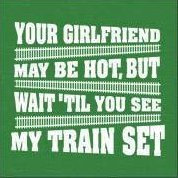
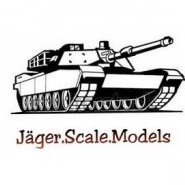


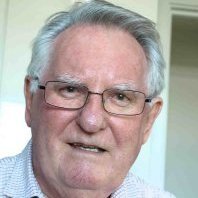


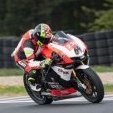

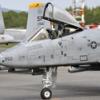
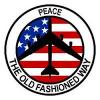
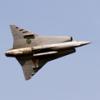
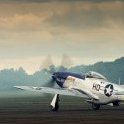

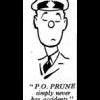
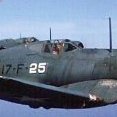
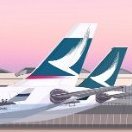
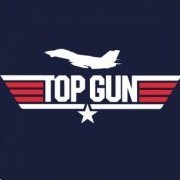
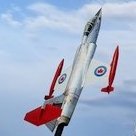
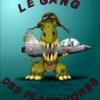
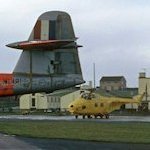





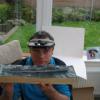

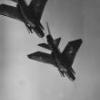
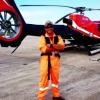
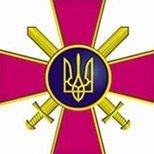
.thumb.jpg.76f12b87ce9ca9929c9aabdcf8f9d2dd.jpg)
